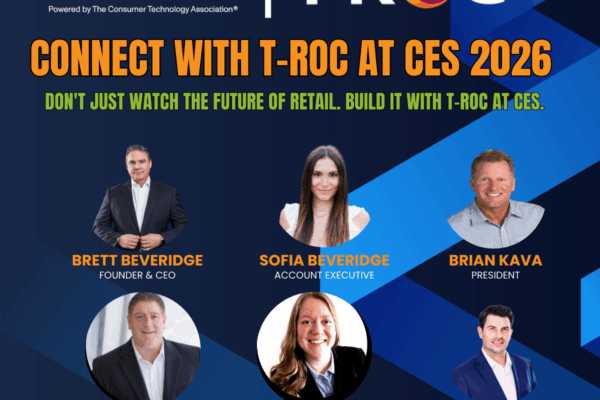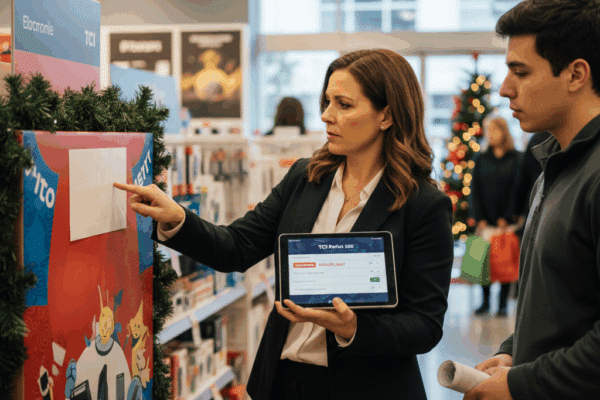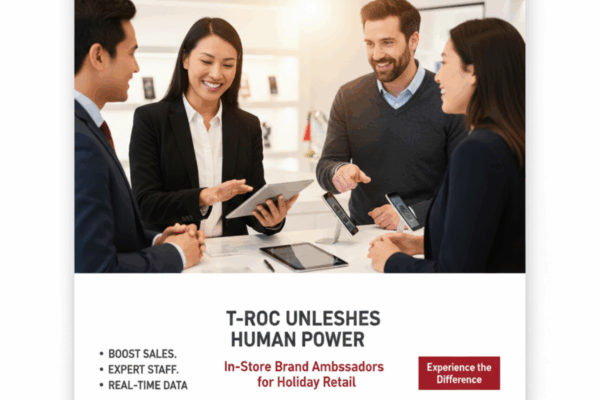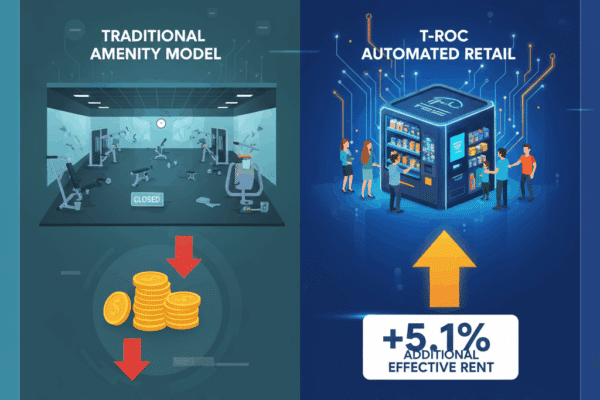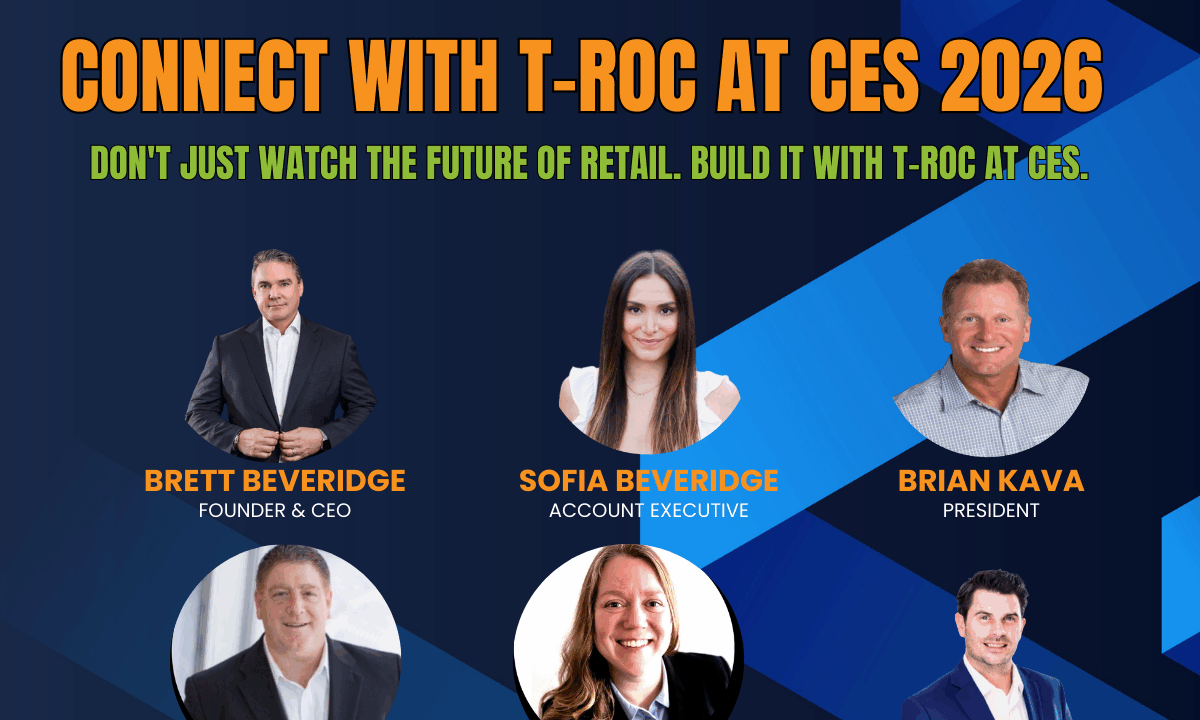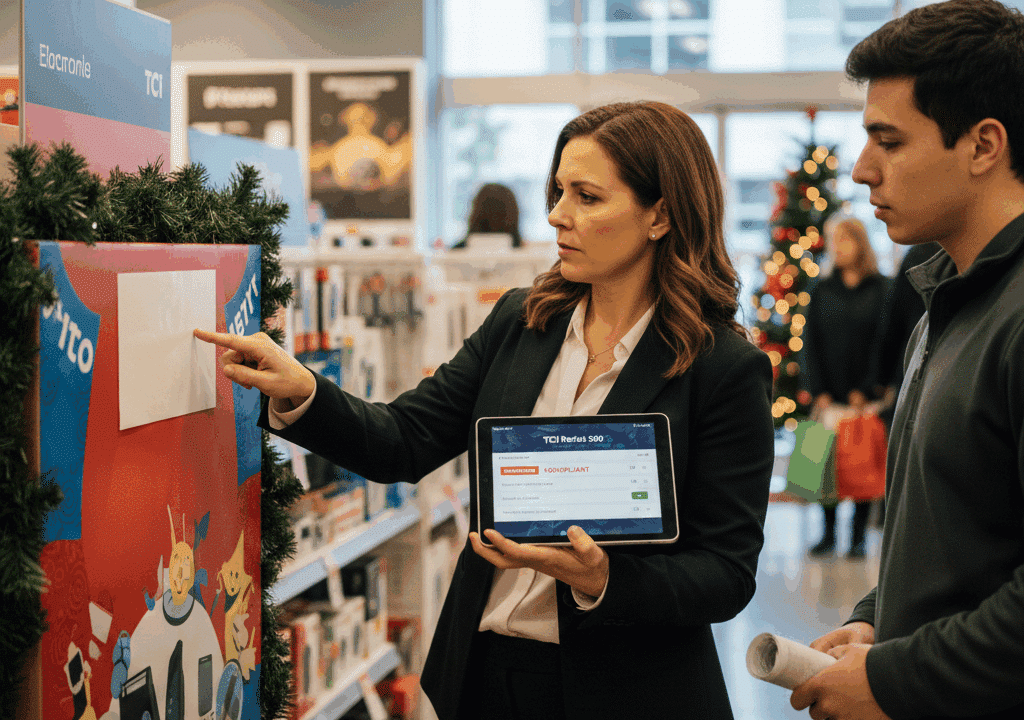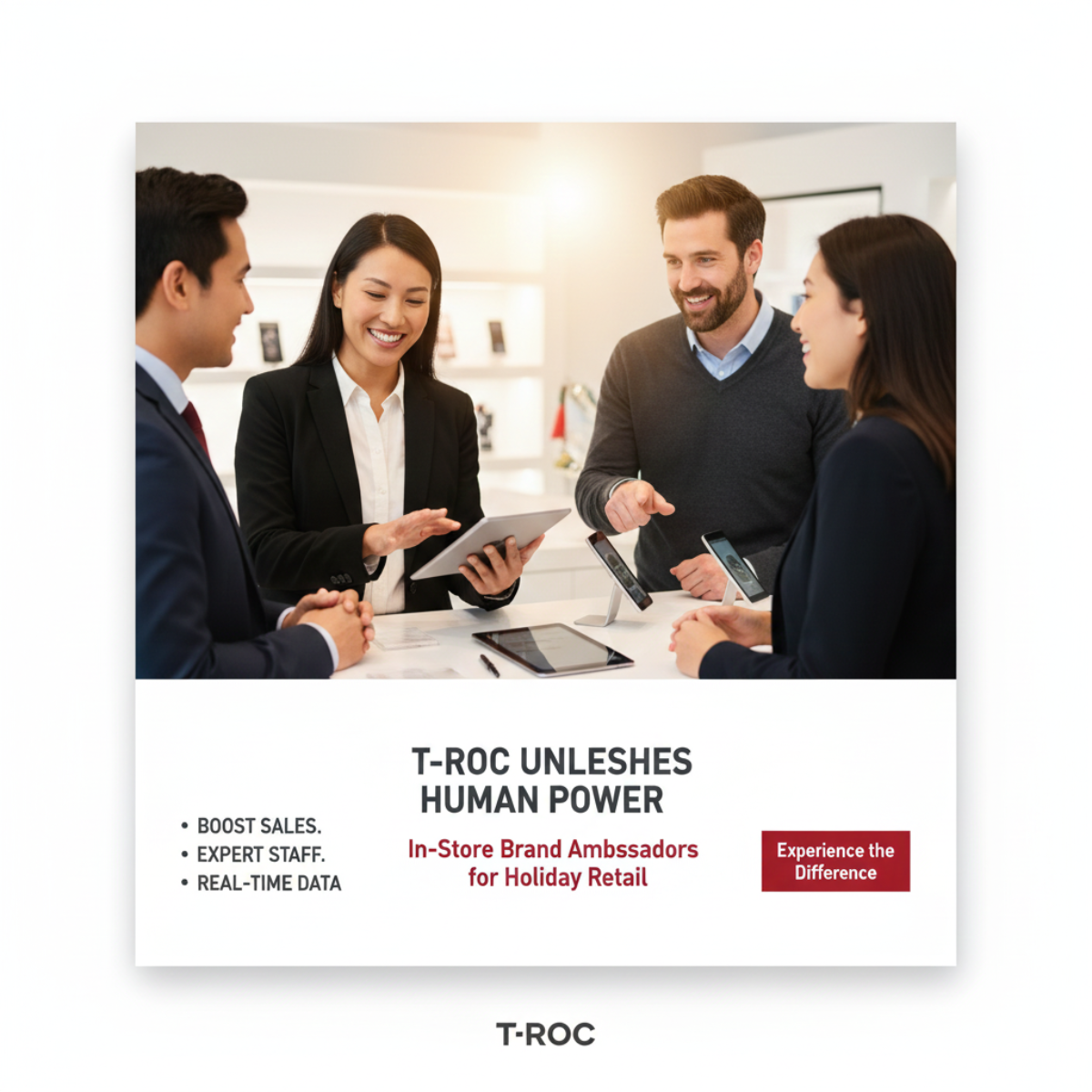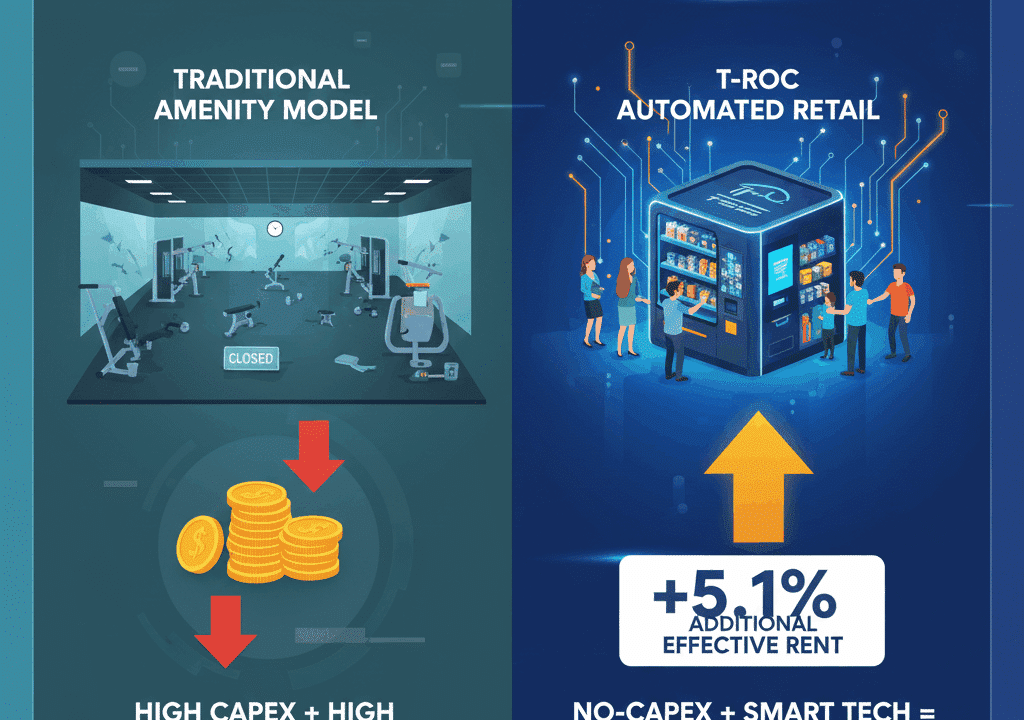
Visual Merchandising Examples That Turn Browsers into Buyers
Visual merchandising is the art and science of presenting products to maximize their appeal to customers and positively influence purchasing decisions. Done right, retail visual merchandising helps attract customers, boost sales, and spread brand awareness. Successful visual merchandising campaigns involve strategically arranging shelving displays, endcap displays, display bins, shelf talkers, header cards, fixtures, and other promotional materials to create an engaging shopping environment that drives store traffic and encourages purchases. Effective visual merchandising can significantly impact a store’s success by enhancing the store experience and increasing retail sales. The following sections will explore great examples of visual merchandising displays and strategies retail brands and consumer products companies use to elevate store appeal, spread brand awareness, and increase foot traffic.
Key Principles of Visual Merchandising
Before diving into specific examples, it’s essential to understand the fundamental principles that guide successful visual merchandising:
- Clarity: Ensure that retail displays and store layout are easy to navigate and understand.
- Consistency: Maintain a cohesive look and feel throughout your store design that aligns with your brand identity.
- Creativity: Use innovative and eye-catching designs and display techniques to capture the attention of target customers.
- Customer focus: Tailor your visual displays to meet the needs and preferences of your target market.
- Changeability: Regularly update your displays to keep store shopping fresh and exciting.
Window Displays: Your First Impression
Window displays serve as the first point of contact with potential customers for physical stores. They should be visually striking and effectively communicate your brand’s message. Here are some examples of compelling window displays:
- Seasonal Themes: Create displays that reflect current seasons or upcoming holidays. For instance, a summer-themed window might feature beachwear, sunglasses, and colorful props like beach balls and umbrellas.
- Product Showcases: Highlight your best-selling or newest products in your window displays. For example, a clothing store might feature a complete outfit on a mannequin styled with accessories to inspire purchasing decisions.
- Interactive Displays: Engage passersby with interactive elements. A bookstore could create a display where people can spin a wheel to receive a book recommendation based on their preferences.
- Storytelling Through Windows: Use your retail displays to tell a story that resonates with your brand. An outdoor gear store might create a camping scene in their display window, complete with a tent, campfire, and starry night backdrop to evoke a sense of adventure.
In-Store Layout and Flow
The way you arrange your store displays can significantly impact customer behavior and purchasing decisions. Consider these store design options:
- Grid Layouts: Commonly used in supermarkets and pharmacies, grid layouts feature parallel aisles that allow for easy navigation and product organization. This layout is efficient for stores with a large variety of products.
- Free-Flow Layouts: Often seen in boutiques and specialty stores, free-flow layouts use curved paths and creative product groupings to encourage exploration. This layout can increase browsing time and boost sales of impulse purchases.
- Forced-Path Layouts: Used by stores like IKEA, forced-path layouts guide customers through a predetermined route, exposing them to more products. This can be effective for stores with a diverse product range.
Product Grouping Strategies
Product arrangement is a powerful tool in the visual merchandiser’s arsenal, capable of significantly impacting customer behavior and boosting sales. By strategically grouping items, retailers can create visual displays that catch the eye and encourage customers to explore and purchase complementary products. Let’s dive into some effective product grouping strategies that can transform your store’s layout and enhance the shopping experience.
- Color Coordination: Arrange products by color to create visually appealing retail displays. A clothing store might group all blue items together for a cohesive look and significant impact.
- Lifestyle Groupings: Display complementary products together to suggest a particular lifestyle. For example, a home goods store could create a cozy reading nook display with a comfortable chair, throw blanket, and reading lamp.
- Complementary Product Pairings: Place items that work well together in close proximity. For instance, a kitchenware store might use endcap displays featuring a coffee maker next to coffee beans and mugs.
- Cross-Merchandising Examples: Showcase products from different categories that can be used together. A grocery store could display pasta sauce near the pasta aisle to encourage additional purchases.
- Point of Purchase (POP) Displays: POP displays can drive impulse purchases and highlight specific products. A creative candy display might woo customers with a sweet tooth.
- Counter Displays: Small displays near checkout counters can encourage last-minute purchases. A beauty store might feature travel-sized products or popular lip balms.
- Floor Stands: Freestanding store displays can draw attention to featured products. A bookstore could use a floor stand to showcase bestsellers or new releases.
- End Cap Designs: End-of-aisle displays are prime locations for promotional items. A grocery store might use endcap displays to feature seasonal products or special deals.
- Interactive POP Displays: Engage customers with hands-on experiences. An electronics store could set up a demo station for customers to try out new gadgets.
Mannequin Styling and Presentation
Mannequins serve as silent yet persuasive salespeople in fashion retail displays, bringing clothing and accessories to life in ways that hangers and garment racks alone cannot. These versatile display tools offer a canvas for creativity, allowing retailers to showcase complete looks, highlight specific pieces, and create engaging visual narratives that captivate customers and influence purchasing decisions. Let’s explore the various approaches to mannequin styling and presentation that can elevate your store’s visual appeal and boost sales.
- Full-Body Mannequins: Use full-body mannequins to display complete outfits, helping customers visualize how clothes will look when worn.
- Partial Mannequins: Torsos and heads can be effective for highlighting specific items like tops or hats.
- Abstract Forms: Non-traditional mannequin shapes can add visual interest and creativity to your displays.
- Grouping and Posing Techniques: Create dynamic scenes by grouping mannequins in natural poses that tell a story or showcase a theme.
Lighting in Visual Merchandising
Lighting is an underestimated tool that can have significant impact on the store shopping experience. Beyond basic illumination, strategic lighting can enhance product appeal, guide customer focus, and create an atmosphere that encourages longer store visits and increased purchases. Let’s shed light on the various techniques and considerations that can make your store shine and wow your target market.
- Spotlight Techniques: Use spotlights to draw attention to key products or displays.
- Ambient Lighting: Create a comfortable shopping environment with well-distributed, soft lighting.
- Color Temperature Considerations: Choose lighting that complements your products. Warmer tones work well for cozy environments, while cooler tones can enhance the appearance of technology products.
- Dynamic Lighting Examples: Implement changing light patterns or colors to create visual interest and highlight different areas of your retail store throughout the day.
Signage and Graphics
Effective signage and graphics are silent communicators that can make or break retail visual merchandising. They serve as crucial waypoints, guiding target customers through your store while conveying important information about products, promotions, and brand identity. Let’s explore how various types of signage and graphics can enhance your visual merchandising strategy and improve customer engagement.
- Digital Signage Examples: Use digital displays to showcase dynamic content, such as product videos or real-time promotions, or use social media language to attract particular customer groups.
- Promotional Banners: Large, eye-catching banners can announce sales or new product arrivals.
- Wayfinding Signs: Clear, concise signs help customers navigate store shopping more efficiently.
- Price Tag Designs: Create attractive and easy-to-read price tags that align with your brand aesthetics.
Seasonal Visual Merchandising
Seasonal visual merchandising is about capturing the spirit of the moment and creating a sense of urgency and relevance in your displays. By adapting the look of your store displays to reflect changing seasons and events, you can tap into customers’ current needs and desires, driving both foot traffic and retail sales. Let’s delve into some effective strategies for keeping your visual merchandising fresh and timely throughout the year.
- Holiday-Themed Displays: Create festive displays for major holidays to capture the spirit of the season.
- Back-to-School Examples: Showcase school supplies and clothing in late summer to target students and parents.
- Summer and Winter Transitions: Adjust your displays to reflect seasonal changes in weather and customer needs.
- Event-Based Merchandising: Capitalize on major events like the Olympics or World Cup by creating themed displays that resonate with current happenings.
Brand-Specific Visual Merchandising
Your visual merchandising campaign should directly reflect your brand’s unique identity and values. From luxury boutiques to fast-fashion outlets, every brand requires a tailored approach to product presentation that resonates with its target customers. Let’s explore how different types of consumer products companies can create brand-specific visual merchandising to spread brand awareness, effectively communicate their unique selling propositions, and drive retail sales.
- Luxury Brand Examples: High-end retail brands often use minimalist displays with premium materials to convey exclusivity.
- Fast-Fashion Visual Merchandising: Fast-fashion retailers typically opt for vibrant, trend-focused displays that change frequently.
- Technology Product Displays: Tech stores often showcase their products using interactive displays, digital signage, and clean, modern aesthetics.
- Beauty and Cosmetics Presentations: Beauty retailers often use well-lit visual displays with testers to encourage product sampling.
Sustainable and Eco-Friendly Displays
Incorporating sustainable and eco-friendly elements into your visual merchandising displays can both attract conscious consumers and demonstrate your brand’s commitment to sustainability. These displays reduce your environmental impact and create unique, eye-catching presentations that can increase store traffic and set your retail store apart. Let’s examine some innovative ways to integrate eco-friendly practices into your visual displays.
- Recycled Material Use: Create displays using recycled or sustainable materials to showcase your commitment to the environment.
- Minimalist Designs: Embrace simplicity in your displays to reduce waste and highlight product quality.
- Green-Themed Displays: Use plants and natural elements to create a fresh, eco-friendly atmosphere.
- Upcycled Prop Examples: Repurpose everyday items in creative ways to add unique touches to your displays.
Small Space Merchandising
Maximizing the impact of limited retail space is a common challenge for many businesses, from boutique stores to pop-up shops. With clever design and strategic product placement, even the smallest spaces can be transformed into visually appealing and highly functional retail environments. Let’s dive into some creative solutions to make the most of your compact store design.
- Maximizing Limited Floor Space: Use vertical displays, display bins, sidekick displays, and multi-functional fixtures to maximize your available space.
- Vertical Merchandising Examples: Utilize wall space with shelving and hanging displays to showcase more products.
- Pop-Up Shop Designs: Create temporary, themed displays that can be easily set up and taken down.
- Kiosk and Cart Displays: Design compact, eye-catching displays for small-format retail displays.
Data-Driven Visual Merchandising
Data is a powerful ally in creating effective visual merchandising strategies. By leveraging customer insights and sales data, retailers can optimize their displays, product placement, and store layout to significantly impact engagement and sales. Let’s examine how data-driven approaches can inform and enhance your visual merchandising efforts.
- Heat Mapping for Store Layouts: Analyze customer movement patterns to optimize product placement and retail space layout.
- A/B Testing in Display Designs: Experiment with different visual merchandising display designs and measure their impact on purchasing decisions.
- Personalized Displays Based on Customer Data: Use customer insights to create targeted displays that appeal to specific segments.
- Adapting to Real-Time Sales Data: Adjust your merchandising strategy based on current sales trends and inventory levels.
Measuring the Success of Visual Merchandising
Implement measurement and analysis strategies to ensure the effectiveness of your visual merchandising efforts. You can continually refine and improve your merchandising approach by tracking key performance indicators and analyzing customer behavior. Let’s explore the metrics and methods for evaluating the success of your display techniques.
- Key Performance Indicators (KPIs): Track metrics such as sales per square foot, conversion rates, and average transaction value.
- Customer Engagement Metrics: Monitor dwell time, touch points, and customer feedback to gauge the impact of your displays.
- Sales Impact Analysis: Compare sales data before and after implementing new visual merchandising strategies.
- ROI Calculation for Visual Merchandising Efforts: Assess the return on investment for your visual merchandising initiatives to inform future decisions.
Visual merchandising is a powerful tool for boosting store traffic and driving sales. By implementing creative and strategic display techniques, retailers can create engaging shopping experiences that resonate with customers. Remember to continually experiment with different approaches, stay attuned to your target audience’s preferences, and measure the impact of your efforts. With dedication and innovation, you can transform your store into a visually appealing destination that keeps customers returning for more.
Behind the Success: The T-ROC Advantage
At T-ROC, we empower businesses to reach new heights in customer engagement and sales performance. As industry leaders in providing innovative people and technology solutions, we specialize in elevating the retail experience for some of the biggest names in the business.
Our core mission is simple yet powerful: we provide the expertise, personnel, and cutting-edge technology that businesses need to thrive in today’s competitive marketplace. Whether through our highly trained brand ambassadors, efficient overnight resetting teams, or state-of-the-art technology solutions, we’re committed to boosting your bottom line.
We take pride in our ability to recruit, train, and deploy top-tier talent, allowing your business to focus on what it does best. Whether you need more people on the floor, require technology solutions to streamline operations, or are looking for ways to improve your customer experience, T-ROC has the expertise and resources to make it happen.
At T-ROC, we’re more than just a service provider – we’re innovators, problem-solvers, and dedicated partners in retail success. Join us in revolutionizing how businesses connect with their customers and watch your sales soar.
Frequently Asked Questions
What are the 5 key elements of visual merchandising?
Visual merchandising comprises five key elements that harmonize to create an engaging and effective shopping environment. These elements are store layout and design, product displays and groupings, signage and graphics, lighting, and color and sensory elements. When combined, these elements attract customers and encourage purchases, making them essential to successful visual merchandising campaigns.
How can I improve my visual merchandising skills?
Improving your visual merchandising skills is an ongoing process that involves both learning and practical application. Start by studying successful retailers and analyzing their display techniques. Next, experiment with different layouts and product groupings in your own space. Stay informed about retail visual merchandising trends and evolving consumer preferences through trade publications and online resources. Regular practice in creating displays is crucial, and seeking feedback from colleagues and customers can provide valuable insights. Finally, analyze sales data to understand the impact of your merchandising efforts.
What are some examples of visual merchandising?
Some common examples of visual merchandising displays include eye-catching window displays that feature seasonal themes or highlight new products, product demonstrations and interactive displays, mannequin styling, and color-coordinated product groupings. Signage and promotional graphics also communicate information and sales messages. Near checkout areas, point-of-purchase displays encourage impulse buys. These diverse examples demonstrate the many ways retailers can present products attractively and engage customers through visual means.

